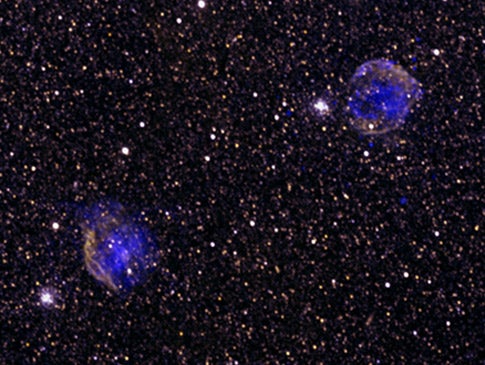Orbiting X-ray observatories may have uncovered a new class of exploded stars, or supernovae. Dubbed “prompt” type 1a supernovae, they are the James Deans of stellar evolution: They hit their peak young and then die in a blaze of glory.
Astronomers used NASA’s Chandra and the European Space Agency’s XMM Newton observatories to study the remnants of two exploded stars — DEM L238 and DEM L249 — in the Large Magellanic Galaxy. A high concentration of iron atoms suggests DEM L238 and DEM L249 are the products of exploded white-dwarf stars. A white dwarf is the small, massive, late stage in the evolution of a star similar to our own. Exploded white dwarfs are categorized as type 1a supernovae.
The observations were conducted by researchers from North Carolina State University in Raleigh and Millersville University in Pennsylvania. The odd thing, the team discovered, is that the hot gas in DEM L238 and DEM L249 is denser and emitted more X-ray energy than typical 1a supernovae.
Computer simulations suggest an explanation: The pre-supernova white dwarfs started out as unusually large stars that expelled a lot of gas into their surroundings; then, after the stars evolved into white dwarfs, they exploded within the dense cloud of gas expelled previously.
White dwarfs are normally stable and don’t explode without help. So the parent stars of DEM L238 and DEM L249 were most likely members of double, or binary, star systems that pulled gas from their companions until they grew unstable and exploded. Because the stars started out larger to begin with, the time until explosion would have been about 100 million years — significantly shorter than that of a typical type 1a supernovae.










